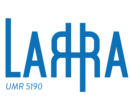Scope note for the class Survey Surface Unit – U4 Back
Validated
Scope note
- Text
This class comprises single land plots with artificially or physically defined boundaries that are the object of investigation in an Archaeological Survey (U1). Plots can be defined by imposing a geographical grid that ignores the landscape, or by following existing land use or land cover; their geometry can be point-, line, or polygon-based depending on the survey design. Typical nouns used to describe this class are tracts, units, walker lines. The substance of a Survey Surface Unit is a material physical feature on the Earth with a specified boundary.
Instances of Survey Surface Unit come into existence [see note below] through their designation in an official survey surface registration system. They continue to exist so long as the material physical feature designated continues to exist in substantially the same place and form and the boundary indicators for these plots can be recalled through some medium (physical, digital, memory). A Survey Surface Unit ceases to exist when it is sufficiently degraded so that it no longer bears a material or spatial continuity with its original designation or if the designating information is lost. For example, when it has been substantially altered or removed by fluvial erosion, quarrying, etc. or there remain no records that allow the re-identification of the land plots on the surface of the earth.
Survey Surface Units are typically designed to help the identification of archaeological sites and/or the mapping of the archaeological landscape as a continuum.
A note concerning the relation between a site, in the colloquial sense, an instance of survey surface unit U4, and the CRM class E27 Site:
What archaeologists regard as a ‘site’ is modelled as a type of E27 Site. An E27 Site as a physical feature exists objectively in the world with or without our knowledge of it, but comes to be declared an ‘archaeological site’ as a result of archaeological surveys or similar practices. This would typically be documented through the p2 has type E55 relation using a vocabulary term for archaeological site. One ‘site’ may be covered by and consist of one or many instances of U4 Survey Surface Units and one instance of U4 Survey Surface Unit can contain one or many archaeological sites. Once declared as archaeological, a site may itself be considered also to be an U4 and thus be visited directly via a Survey Process Unit.
Note: Of course being physical objects they preexist their being named or recognized by human beings. Their existence in a physical sense as a certain conglomeration of matter in space and time is not dependent on the existence of human beings. But once named and defined by a human group the physical substance now supports an additional identity that it did not have before which nonetheless has physically objective and findable properties. It is in this way that the object qua (as) survey unit comes to be although regarding its substance as matter that matter was already in existence yet without the attribution of an identity relative to a survey.
- Language
- en




Comments
No comment found.